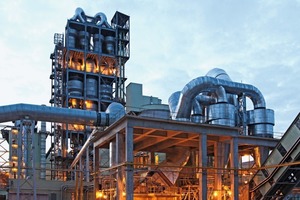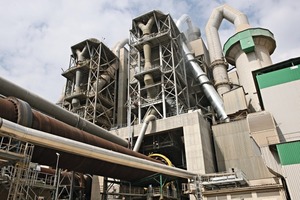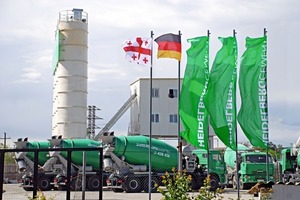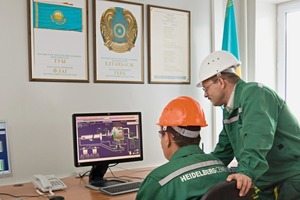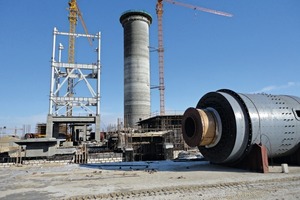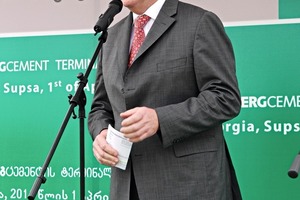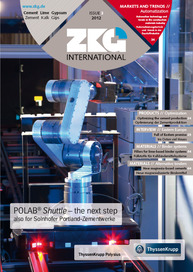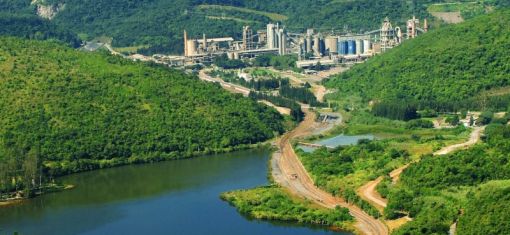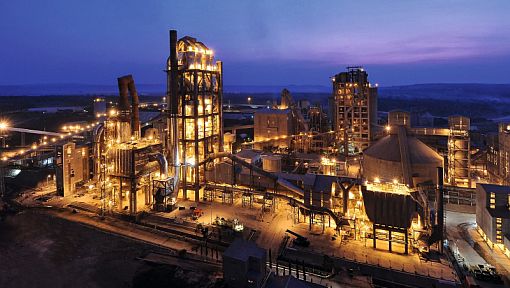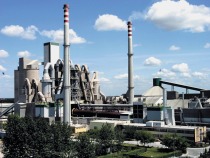HeidelbergCement has been active in Eastern Europe for more than twenty years. The group’s Eastern Europe-Central Asia region, for which management board member Andreas Kern is responsible, serves eleven countries. In the majority of these growth markets, Heidelberg is not only the market leader in the field of cement, but is also continuously expanding its position by means of capacity enlargements. The recovery of aggregates and the production of ready-mixed concrete are also steadily gaining in importance. ZKG interviewed Andreas Kern on developments in Eastern European markets.
ZKG: Herr Kern, HeidelbergCement is currently backing the setting-up and expansion of production capacities in the regions of Eastern Europe. In which countries are new capacities being installed and in which are existing kiln lines being modernised?
Andreas Kern: The Eastern Europe-Central Asia region, along with Asia-Pacific and Africa is definitely one of the most exciting growth markets for HeidelbergCement at present. This, of course, is the reason we have also, for the first time, ventured into two greenfield projects in this region, the plants at Tula, in Russia (Fig. 1) and Shetpe, in Kazakhstan. We commissioned our new cement plant, in the Tula region, around 150 km to the south of Moscow, as early as last autumn. Tula has a capacity of two million t, and is mainly intended to serve the booming Moscow market. Russia is an extremely attractive market for us; demand for cement is rising steeply, and forecasts predict cement consumption increasing from 50 million t in 2010 to around 70 to 90 million t over the next ten years. Our Tula plant now has a capacity of around five million t of cement annually in Russia. In addition, we also operate three cement terminals at Kaliningrad, Murmansk and in the Archangelsk region which we have also been supplying with cement from our Norwegian plants via an import terminal since June, 2011. We are also planning to expand the cement production capacity at the CESLA plant, in Slantsy, near St. Petersburg, to 1.5 million t, by constructing a new kiln line, which will be due for completion in 2014.
ZKG: And what is the picture in the other countries of Eastern Europe?
Andreas Kern: Our largest and most modern European cement plant is located at Górazdze, in Poland (Fig. 2). We commissioned a new and modernised kiln line there in 2011, increasing our clinker capacity in Poland from 3.1 million t/a to 4.0 million t/a (calculation according Best Daily Production) after modernization of kiln No. 2. Grinding capacity is to be increased in the next expansion phase, by constructing a new cement mill to match the new clinker production capacity. The cement capacity in Poland was previously 4.3 million t/a before and will be 5.6 million t/a after erection of mill No. 4. This phase is scheduled for completion by mid-2012. We also intend to increase our use of secondary fuels in Poland simultaneously, and to construct a larger fuel storage facility specifically for this purpose. We are also active in the fields of aggregates and ready-mixed concrete in the Slovak Republic, where we acquired a cement terminal in 2011, enabling us now to import cement from our plants in Hungary and the Czech Republic. Again, in Hungary, we have further expanded our ranking in the aggregates sector by means of an acquisition in the Greater Budapest region. In Romania, we have expanded the Bicaz plant, in the north-east of the country, to an annual capacity of 2.3 million t, and modernised the Fieni plant, near the capital, Bucharest, including installation of a new clinker silo and a mill with a capacity of 1 million t/a. And in Georgia (Fig. 3), a strategically well positioned country with a large growth potential, we have opened a terminal at Supsa, on the Black Sea, to improve our market coverage in this region. This facility has a handling capacity of 300 000 t/a, and enables us to deliver cement directly to the Black Sea coast.
ZKG: How important is the Eastern European market for you?
Andreas Kern: The countries of Eastern Europe were HeidelbergCement’s strongest growth region in 2011 – sales increased in the majority of these countries. The region contributes around 11 % to group sales, and around 18 % to the group’s total cement sales.
ZKG: How do you view the potentials for development in Eastern Europe?
Andreas Kern: We assume non-uniform development in 2012 for the group’s Eastern Europe-Central Asia region: we anticipate continued weak development in Hungary and Romania, but we are expecting rising demand in Poland and the Czech Republic, in particular. We are also reckoning with increasing demand in Russia, Ukraine and the Central Asian countries. The overall prospects are good, however, and we will therefore continue to expand our network of plants, including the aggregates and concrete sectors, throughout the Eastern European region, in order to advance further with our programme of vertical integration. One important item of which we must never lose sight are prices. In 2011, we were caught unprepared by a sharp rise in power and energy costs throughout the region, and we will have to balance this with corresponding price increases in all countries. In addition to rising energy and power costs, one real challenge in the majority of booming countries is, above all, rail logistics, due to the current shortage of rolling stock. Huge countries like Kazakhstan and Russia have extremely long delivery routes, and we are trying here to improve the logistics by expanding our network of cement terminals.
ZKG: How does Kazakhstan, in particular, rank in your East European strategy?
Andreas Kern: The market in Kazakhstan is undergoing an extremely positive trend, and our capacities are already fully utilised. We benefit throughout the whole country from the strong growth in construction. There are a lot of infrastructural provisions and major construction projects at the planning stage at present, and cement consumption will therefore increase considerably in the next few years. We are also present in the ready-mixed concrete sector, with five of our own plants in the main economic centres of Astana, Almaty and Aktau. We also have an aggregates plant in the Astana region, and we are planning to expand further here, to optimise our vertical integration. The Bukhtarma cement plant (Fig. 4), 100 km to the south of the town of Öskemen (Ust-Kamenogorsk), in the north-east of Kazakhstan, currently supplies the entire Kazakh market via seven distribution terminals.
ZKG: What are the “vital statistics” for the Shetpe plant, and what markets will it serve?
Andreas Kern: In its first expansion stage, our new plant at Shetpe, near Aktau, on the Caspian Sea (Figure 5) will have an annual capacity of 800 000 t cement. The Shetpe plant will supply the rapidly growing region on the Caspian Sea, and quite possibly neighbouring markets in Russia, Uzbekistan, Turkmenistan and Azerbaijan. We consider the prospects in this region to be extremely promising, thanks to their oil and gas deposits. We intend to start cement production at the new plant during the coming year.
ZKG: How are group-wide codes on environmental protection, occupational and industrial safety and sustainable production implemented in Eastern Europe?
Andreas Kern: Our management concept aims at customer-orientated servicing of the market by means of the use of a local management structure. This strategy has made us successful in Eastern Europe since as early as 1990, and we have, over the years, set up extremely good local organisations and introduced programmes for the promotion and recruitment of qualified people in these countries. And it pays off – on the one hand, we have a single common understanding as far as corporate culture is concerned, throughout the group and, on the other hand, we are able to fill vacant posts quickly with our own specialists from the various countries. Our group-wide codes are implemented in Eastern Europe by our local management, just as they are everywhere else around the world.
ZKG: Thank you for this interview.

